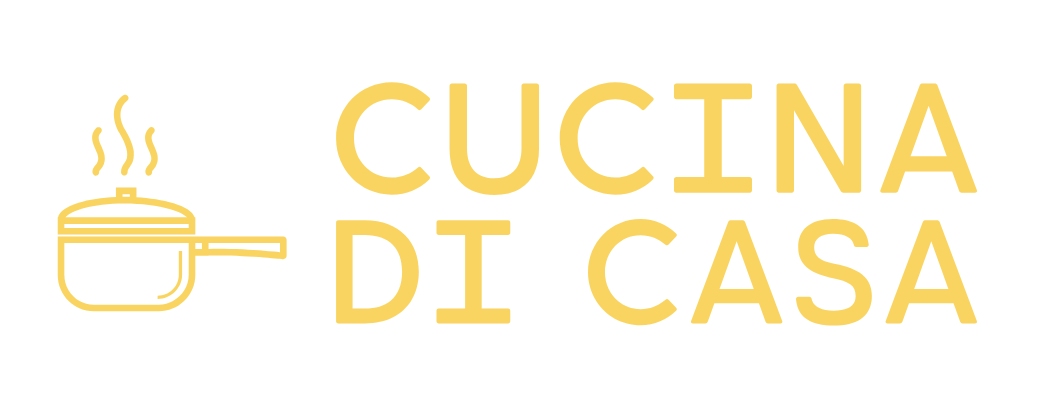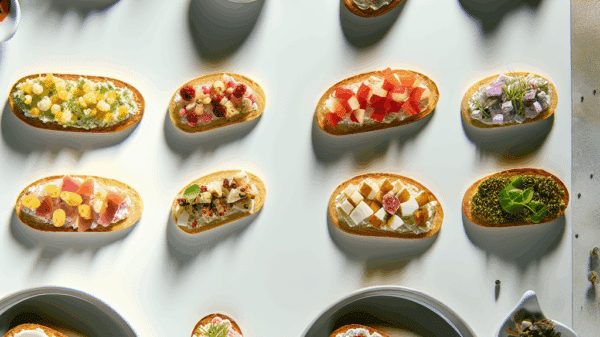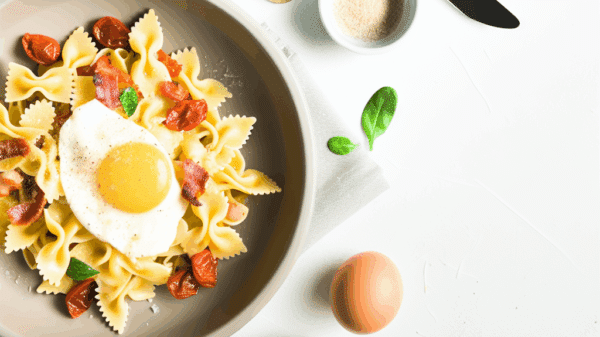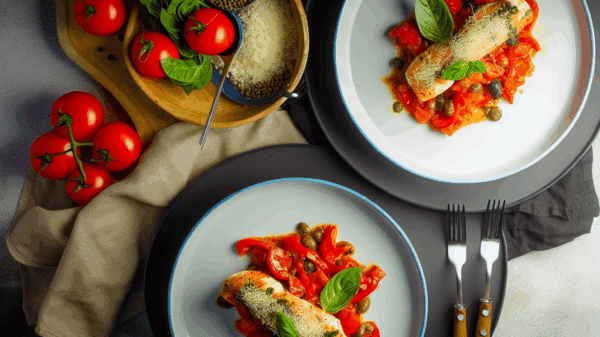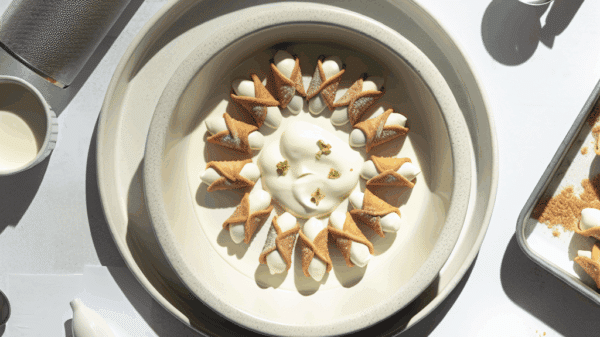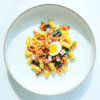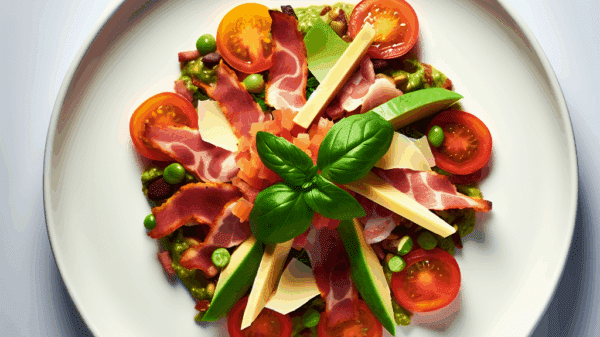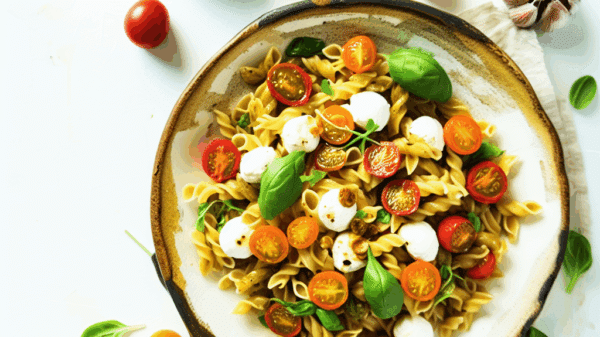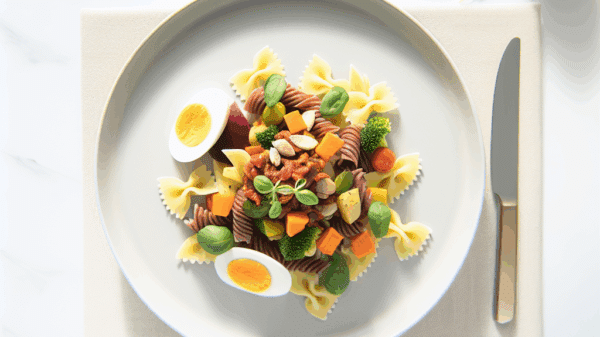Overview
Antipasto platters are a traditional Italian appetizer typically served before the main meal. Originating from various regions across Italy, including Tuscany and Sicily, these vibrant platters showcase a combination of cured meats, cheeses, olives, marinated vegetables, and more. They are perfect for gatherings, parties, or as a delightful appetizer for a family meal. Prep time for creating a stunning antipasto platter usually takes about 30–45 minutes, with minimal cooking involved, making it an accessible dish for anyone looking to impress.
Ingredients
- 150g (5.3 oz) Prosciutto di Parma
- 100g (3.5 oz) Salami (sliced)
- 150g (5.3 oz) Parmigiano-Reggiano cheese (cubed)
- 100g (3.5 oz) Fresh mozzarella balls
- 100g (3.5 oz) Mixed olives (green and black)
- 200g (7 oz) Marinated artichoke hearts
- 150g (5.3 oz) Roasted red peppers (jarred or homemade)
- 100ml (3.4 fl oz) Extra-virgin olive oil
- Fresh basil leaves for garnish
- Crusty Italian bread or breadsticks
Step-by-Step Instructions
- Start by preparing your ingredients. Arrange the cured meats on a large serving board or platter. Use a variety of shapes and colors to create visual appeal. This should take about 10 minutes.
- Next, place the cheese: cube the Parmigiano-Reggiano and add fresh mozzarella balls. Ensure they are spaced out to balance the platter. This should take another 5-10 minutes.
- Now, add the olives and marinated artichoke hearts. Put them in small bowls or directly on the platter, creating sections. This step will take approximately 5 minutes.
- Slice the roasted red peppers and arrange them artfully on the platter. Their vibrant color will enhance the overall look. This step should take around 5 minutes.
- Drizzle extra-virgin olive oil over the platter, allowing it to enhance the flavors. A tablespoon or two should suffice. Done in less than a minute!
- Garnish your platter with fresh basil leaves to provide an aromatic finish. This final touch takes less than 2 minutes.
Variations & Substitutions
You can easily modify your antipasto platter to cater to different dietary preferences:
- Vegan: Replace meats and cheeses with a variety of marinated vegetables, vegan cheeses, and roasted nuts.
- Gluten-Free: Ensure any bread or crackers used are certified gluten-free.
- Dairy-Free: Opt for lactose-free cheese alternatives or skip cheese altogether.
For flavor variations, try adding Italian tapenade, pickled vegetables, or even sun-dried tomatoes. Feel free to explore regional twists like Sicilian caponata or Tuscan beans.
Make Ahead, Storage & Reheating
Antipasto platters are best served fresh, but you can prepare individual components ahead of time. Chopping vegetables, slicing meats, and cubing cheese can be done a day in advance. Store ingredients in airtight containers in the refrigerator. For leftovers, cover the platter with plastic wrap and refrigerate but consume within two days for optimal freshness. Reheating is generally not necessary, but if you include baked items, they can be warmed in the oven.
Nutrition (Approx.)
Per serving (based on 8 servings):
- Calories: 300
- Protein: 15g
- Fat: 22g
- Carbohydrates: 10g
- Fiber: 2g
Serving Suggestions
Antipasto platters pair beautifully with a selection of sides and beverages:
- Salads: A fresh Caprese salad or arugula salad complements the platter nicely.
- Wines: A crisp Sauvignon Blanc or a light-bodied Chianti works great.
- Kid-Friendly Options: Serve with fruit such as melon or grapes to appeal to younger palates.
- Quick-Serve Ideas: Pair with crusty Italian bread or breadsticks for a simple yet satisfying experience.
FAQs
- Can I include cooked items in my antipasto platter?
- Absolutely! Grilled vegetables or small meatballs can add depth to your platter.
- How can I prevent cheese from sweating?
- Keep your platter cool and avoid placing it in direct sunlight.
- What if I can’t find specific ingredients?
- Feel free to substitute similar items; for example, use Gouda instead of Parmigiano-Reggiano.
- How long will leftovers last?
- Leftover antipasto can be kept in the fridge for up to two days.
- Can I serve antipasto as a main dish?
- Indeed! Just increase the quantities for a more filling option.
Conclusion
Crafting the perfect antipasto platter is a wonderful way to explore Italian culinary traditions. With a focus on freshness, quality ingredients, and creativity, you can create a stunning presentation that delights your guests. Remember to customize your platter to suit your tastes and those of your diners, making it a varied and exciting experience. Try incorporating a bit of regional insight—like using fig jam from Tuscany or olives from Sicily—to bring authenticity to your creation. Enjoy and Buon Appetito!
